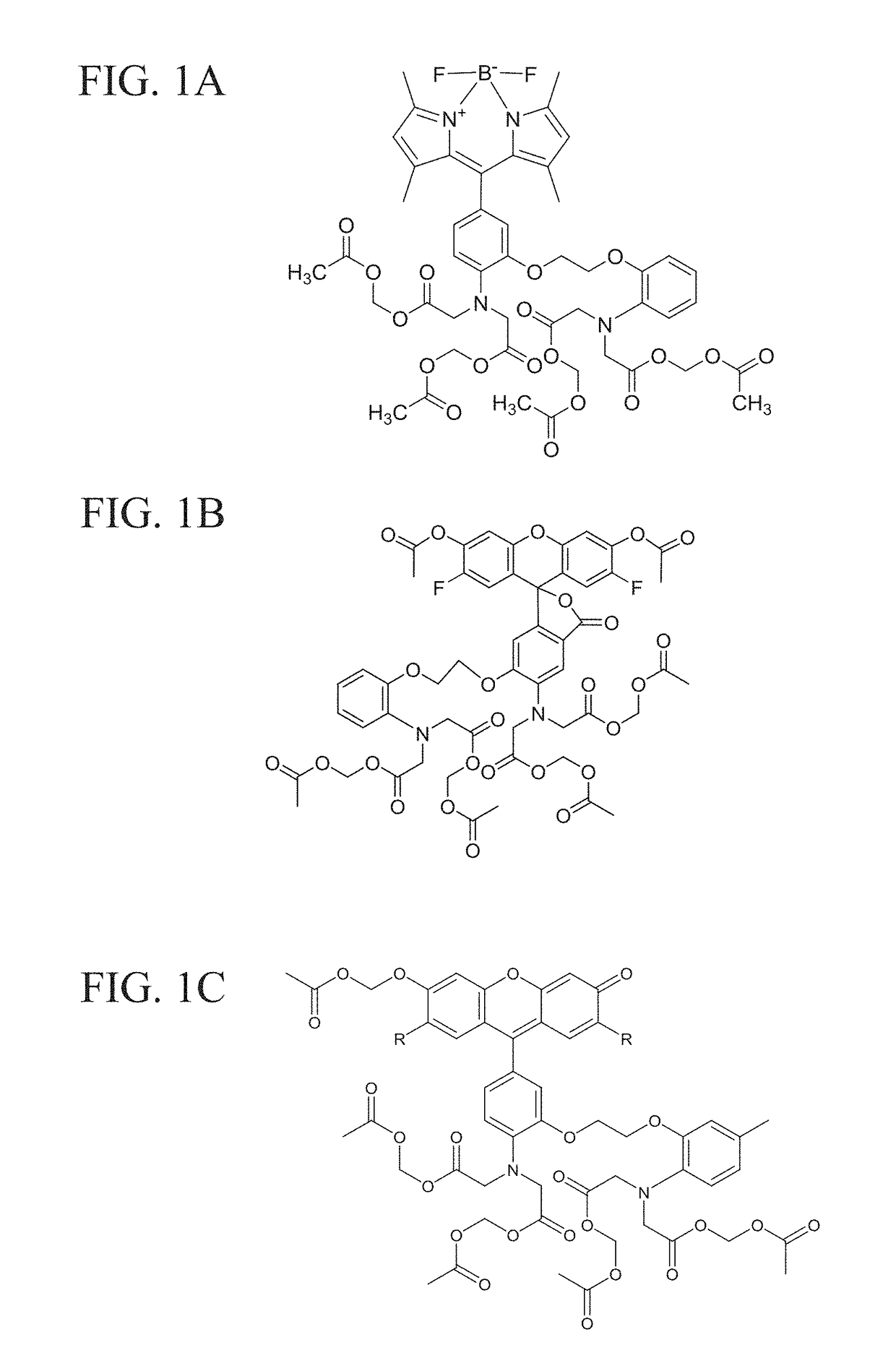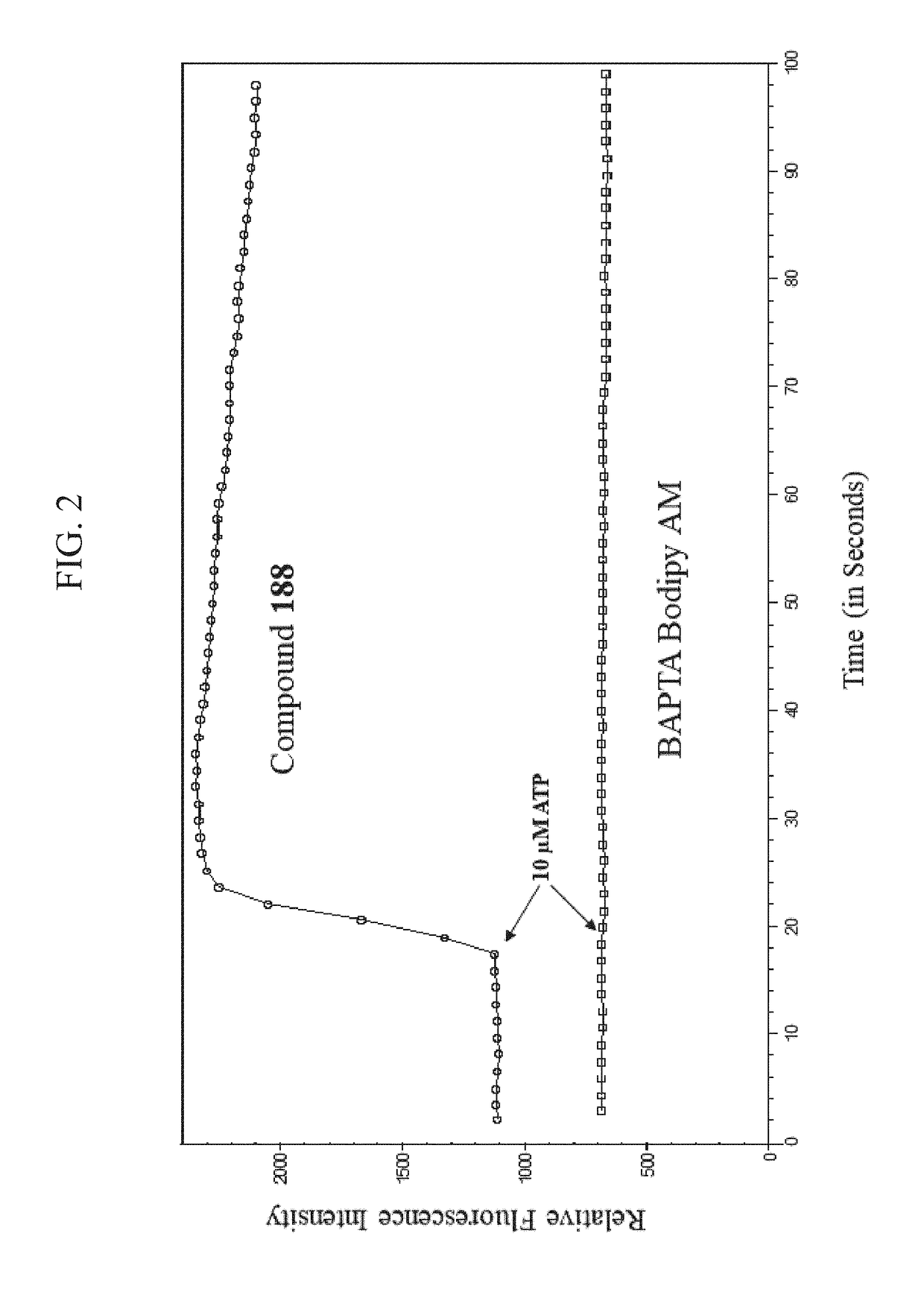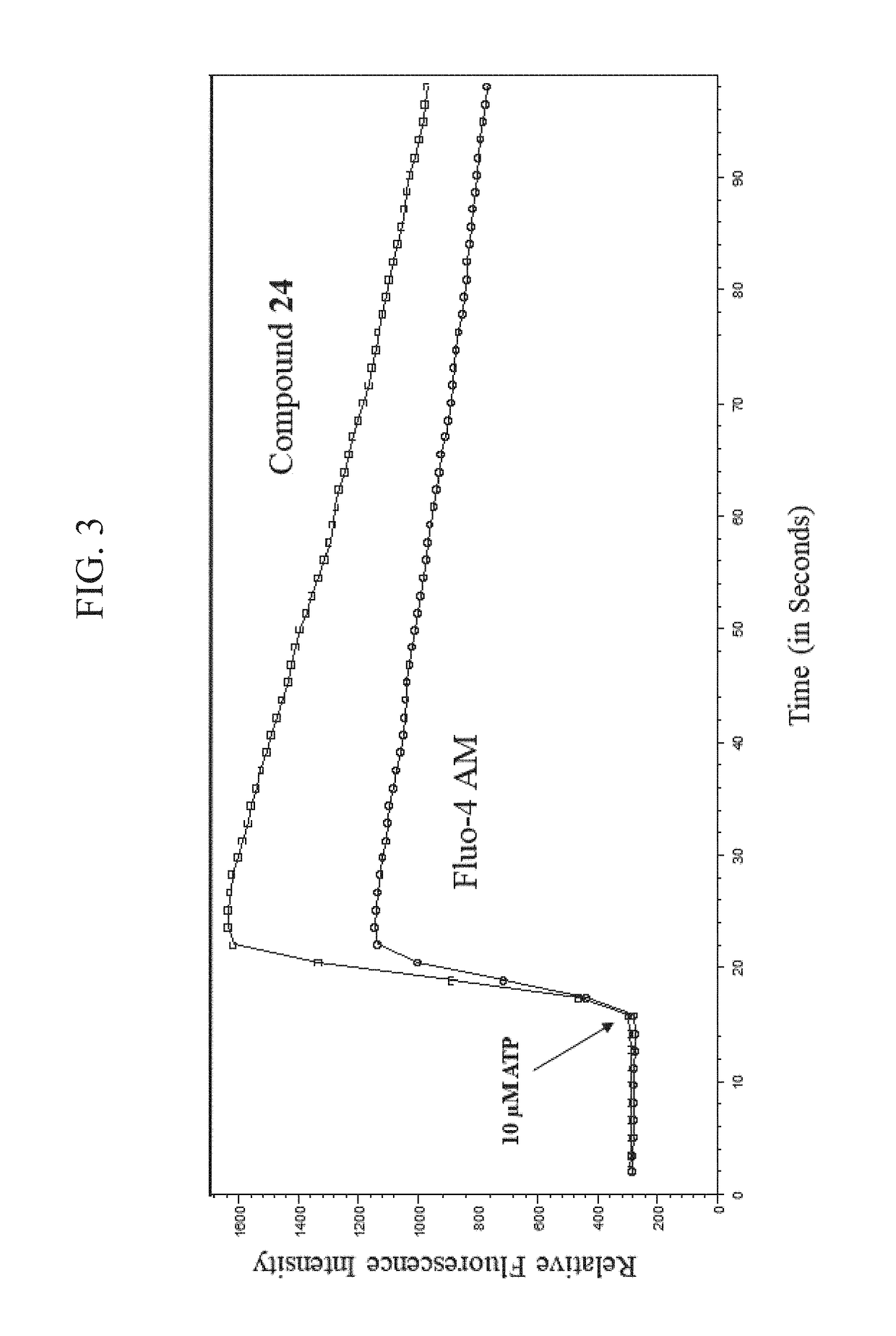Fluorogenic calcium ion indicators and methods of using the same
- Summary
- Abstract
- Description
- Claims
- Application Information
AI Technical Summary
Benefits of technology
Problems solved by technology
Method used
Image
Examples
example 1
on of Compound 3
[0184]
[0185]To the mixture of sodium 2-nitrophenolate (0.5 g, 3.1 mmol) in DMF (2 mL), 1-iodo-2-(2-iodoethoxy)ethane (3 g, 9.3 mmol) is added at room temperature. The mixture is heated at 80° C. for 1 hour. EtOAc (100 mL) is added at room temperature and the white precipitate is removed by filtration. The organic layer is washed with water, brine, dried (anhydrous Na2SO4) and concentrated under vacuum. The crude product is purified by silica gel column chromatography to give Compound 3 (0.9 g).
example 2
on of Compound 4
[0186]
[0187]The mixture of Compound 3 (0.85 g, 2.5 mmol) and sodium azide (0.33 g, 5 mmol) in DMF (6 mL) is heated at 80° C. for 1 hour. To the reaction mixture EtOAc (100 mL) is added at room temperature. The organic layer is washed with water, brine, dried over anhydrous Na2SO4 and concentrated under vacuum to give Compound 4 (0.6 g).
example 3
on of Compound 5
[0188]
[0189]To a steel pressure reactor, the solution of Compound 4 (0.64 g, 2.5 mmol) in EtOAc (20 mL) and MeOH (4 mL) is added, followed by Pd / C (10%, 0.1 g). The reaction vessel is filled with 60 psi hydrogen, and stirred at room temperature for two hours. The Pd / C is removed by Celite filtration. The organic layer is concentrated under vacuum to give Compound 5 (0.5 g).
PUM
| Property | Measurement | Unit |
|---|---|---|
| Fluorescence | aaaaa | aaaaa |
Abstract
Description
Claims
Application Information
 Login to View More
Login to View More - R&D
- Intellectual Property
- Life Sciences
- Materials
- Tech Scout
- Unparalleled Data Quality
- Higher Quality Content
- 60% Fewer Hallucinations
Browse by: Latest US Patents, China's latest patents, Technical Efficacy Thesaurus, Application Domain, Technology Topic, Popular Technical Reports.
© 2025 PatSnap. All rights reserved.Legal|Privacy policy|Modern Slavery Act Transparency Statement|Sitemap|About US| Contact US: help@patsnap.com



